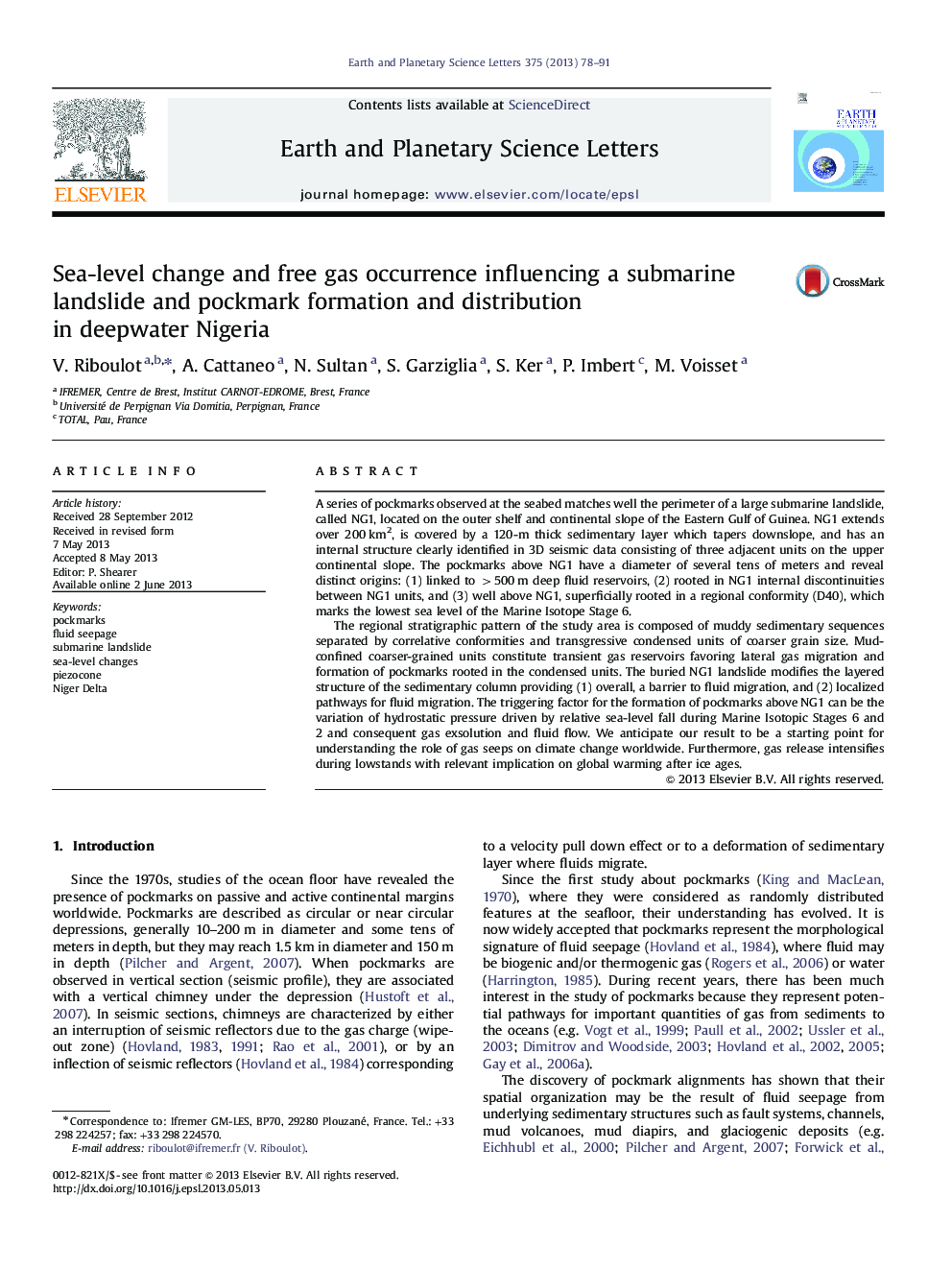| کد مقاله | کد نشریه | سال انتشار | مقاله انگلیسی | نسخه تمام متن |
|---|---|---|---|---|
| 6430187 | 1634780 | 2013 | 14 صفحه PDF | دانلود رایگان |
- This is the first study linking the effect of a landslide on gas migration pathways.
- Pockmark formation is reconstructed with geophysical and geotechnical data.
- The landslide occurred during a sea-level fall period.
- The timing of pockmark formation is in part controlled by 100-kyr eustatic cycles.
- Once buried, the landslide controls the spatial organization of pockmarks.
A series of pockmarks observed at the seabed matches well the perimeter of a large submarine landslide, called NG1, located on the outer shelf and continental slope of the Eastern Gulf of Guinea. NG1 extends over 200Â km2, is covered by a 120-m thick sedimentary layer which tapers downslope, and has an internal structure clearly identified in 3D seismic data consisting of three adjacent units on the upper continental slope. The pockmarks above NG1 have a diameter of several tens of meters and reveal distinct origins: (1) linked to >500Â m deep fluid reservoirs, (2) rooted in NG1 internal discontinuities between NG1 units, and (3) well above NG1, superficially rooted in a regional conformity (D40), which marks the lowest sea level of the Marine Isotope Stage 6.The regional stratigraphic pattern of the study area is composed of muddy sedimentary sequences separated by correlative conformities and transgressive condensed units of coarser grain size. Mud-confined coarser-grained units constitute transient gas reservoirs favoring lateral gas migration and formation of pockmarks rooted in the condensed units. The buried NG1 landslide modifies the layered structure of the sedimentary column providing (1) overall, a barrier to fluid migration, and (2) localized pathways for fluid migration. The triggering factor for the formation of pockmarks above NG1 can be the variation of hydrostatic pressure driven by relative sea-level fall during Marine Isotopic Stages 6 and 2 and consequent gas exsolution and fluid flow. We anticipate our result to be a starting point for understanding the role of gas seeps on climate change worldwide. Furthermore, gas release intensifies during lowstands with relevant implication on global warming after ice ages.
264
Journal: Earth and Planetary Science Letters - Volume 375, 1 August 2013, Pages 78-91
